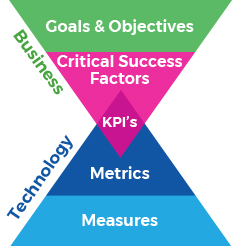
Are you reading this article on a mobile device? Going by statistics, insights and the scene at any dining table or college cafeteria, you most likely are. We live in a mobile-first world. In an average day, at least one out of four people with access to the internet, only use a smart phone. Moreover, we freely move back and forth between devices to get things done: Over half of this demographic rely on more than one type of device in an average day, with 1/5 of them using another device while concurrently using a computer (Google Insights).
Due to the stupendous role mobile phones play in our lives enabling us today to conduct all operations on the move, consumers now have the flexibility to develop curiosity, interest, attraction, and craving for a product, even compare it with similar products and place the order, within moments of viewing its ad on Instagram! But, there is an acute dearth of conclusive data on what determines online consumption today.
With the advent of Marketing Attribution, we are closer to solving the mystery of what makes up effective digital marketing. Attribution Metrics is the way in which marketers assess ROI of the strategies/channels that connect them to potential customers. These tools simplify the retailer’s understanding of what it takes to make their products marketable, in the absence of any direct communication between the consumer and the seller (save for review forms and online surveys). To learn which marketing strategy is paying off, which chess piece needs to be moved around to generate better results, Marketing Attribution brings you the best system to standardize and monitor consumer behaviour.
Why is accurate attribution so important for your business?
The holy grail of media measurement is to analyze the impact and business value of all company-generated marketing interactions across the complex customer journey. Settling to remain in the dark—or worse, working under wrong assumptions—is akin to driving without a navigator. Inaccurate attribution will not only hamper your growth rate, it can also throw you off the right track by generating false impression or sketchy information about the complexities involved in online retail. Various marketing channels combine and permute to convert leads to sales, and the number of such channels is increasing every day with each new feature getting added to social media-verse. Facebook Explore, Instagram Live, Snapchat stories, Twitter buttons and Pinterest redirects are constantly revamping themselves to make it easy for businesses to attract and improve their presence for prospective buyers.
This also makes it more difficult for these businesses to generate an actionable analysis of which channel is ultimately responsible for their success or the lack of it. With new agents (for mobile online payment like PayTm or Apple Wallet) being constantly introduced to the cycle reaffirms how important it is for marketing attribution to be constantly vigilant about the newest developments in the field.
According to Matt Voda writing for The Make Good, “With accurate attribution comes not just more confidence in the strategies and tactics in place today, but most importantly, better decision-making, improved efficiency and effectiveness, and higher ROI. Accurate attribution helps you confidently zero in on your next best moves.”
Attribution will be the biggest challenge marketers face this year
Besides facing the perennial challenges of piecing together the product’s lifecycle complicated by dynamic ads, there are privacy and customer trust issues which makes tracking every step of the way difficult, unethical, unprofitable and counterproductive. One aspect that attribution metrics have not yet been able to solve is how offline advertising affects the online purchase. This offline to online transition has made one thing difficult for sure: it is now much harder to estimate the impact of your campaign, especially when it comes to mobile marketing. Developers are still struggling to come up with ways in which cross-channel influencers affect the performance of online ads. The rapidly changing scene today demands granular ad-level analytics to drive day-to-day activities of branding and marketing teams.
Different Types of Attribution Models :
1. Single Source Attribution: First or last touch-based attribution takes into account only the channels engaging target audience with the product in the very beginning or the end. Upper Funnel Distribution registers the beginning of a customer’s purchase journey as in the case of programmatic display ads, while Bottom Funnel Attribution makes note of an ad’s ability to close the deal, like run search ads.
2. Multisource attribution: Since both touch points work together in driving conversions, most businesses prefer a model that generates insights on all levels of lead engaging. Multisource attribution credits each channel for their contribution to the final conversion; it includes everything from ads and social posts to webinars and e-newsletters.
Also known as equal attribution, this accounts for every involvement in attaining a final sale. “It brings a sense of equality to the process, but at the same time doesn’t take into consideration the idea that certain aspects of the conversion have more weight than others – for example, the first time an ad is shown could arguably have played more of a role in the final conversion than duplicate impressions.”
In such cases, weighted attribution proves to be more effective because it facilitates and substantiates these insights with by filing the hierarchy of the roles played by each channel in converting leads to sales.
3. Post-view attribution gives conversion credit to the visibility, reach of the ad. However, this is highly unreliable and quite useless at the end of the day, because while a lot of ads are shown to users, not all of them are necessarily seen. This is why post-click attribution is more useful in eliminating unnecessary data, taking into account only those ads which have generated clicks or redirects to the next stage of purchase (to the company’s website or shopping portal, for example).
After the initial touch and before the final touch point before the sale, it doesn’t account for any prior website visits and is thus unable to shed little or no light on other valuable marketing channels.
4. Fractional Attribution: An integrated method that contributes to the conversion while attributing it, fractional attribution simplifies the job by reducing the time taken to analyse and implement measures based on the generated metrics. How? It determines duplicate or redundant attributions that can now be instantly removed and assigns greater weight to those that did play a greater role in the final conversion.
How will you know which Attribution Model is best for you?
With the emergence of newer models for marketing attribution, it is becoming increasingly difficult to choose from among them. This dilemma is buttressed by the fact that no one model can ever depict the entire picture behind the start to finish of a product’s life online before it is picked up by a consumer. The correct question that enterprises should be asking at this point isn’t which model to adopt but “what value is each model going to add to my existing model?”
While last (single) touch attribution is most suitable for leads already in the pipeline but when their conversion is uncertain, the multi-touch model gives you an overview on the impact and value added by each channel to your buying cycle. There are several types of multi-touch attribution based on the weightage given to each channel involved, that are all appropriate for different business agendas. For poor conversion rates despite high-quality traffic (in case of long sales cycles), opt for the Time Decay model. To assess the holistic allocation of marketing channels, W-shaped models generate more useful data, as compared to U shaped and single touch models.
KPIS for measuring mobile performance
Besides leads, conversions, channels and sales revenue, there are other nuances to identifying better performance indications for tracking and understanding Mobile Performance Marketing. A good grasp over your KPIs will help you delegate analytics and attribution to the most suitable model.

Key Performance Indicators can later be optimized to birth better and similar ad campaigns. To drive your performance forward, better KPIs need to be incorporated and computed into the attribution system.
Tips for a successful mobile marketing campaign
The first step to a successful mobile marketing campaign is identifying the avenues and platforms available and then thinking out of the box to bring more platforms into the game. Under mobile marketing’s purview fall push notifications in the form of text and multimedia messages, mobile applications, in-game marketing, mobile banner advertising, QR codes, voice marketing, local (location based) and paid searches (often with click to call extensions or accompanying maps).
After the roadmap is set and the target audience identified, be forward thinking in adopting the latest innovations in mobile marketing. Never hesitate to experiment with new models. Analyse and improve the mobile performance of your ads by running multiple campaigns simultaneously. That will go a long way in ensuring all your marketing channels are finding adequate use in the complicated circuit of consumer demand.
Conclusion
To recap what we have already discussed regarding the abundant usefulness of attribution metrics in performance driven marketing, and why it is important to be at the top of your game when it comes to marketing data analytics:
WHAT
Analyse and improve mobile performance of your ads
WHY
To benchmark your efforts
HOW
Pay attention to detail and deploy efficient attribution models and marketing campaigns
Instead of being partial to the model that gives the most credit to your marketing hacks, take adequate time to understand how each of them perform attribution metrics and what are the minute differences you are likely to get with each model. That will go a long way in ensuring all your marketing channels find adequate use in the complicated circuit of consumer demand.
Take a step closer to predict human desire better and unlock the secret to effective digital marketing.